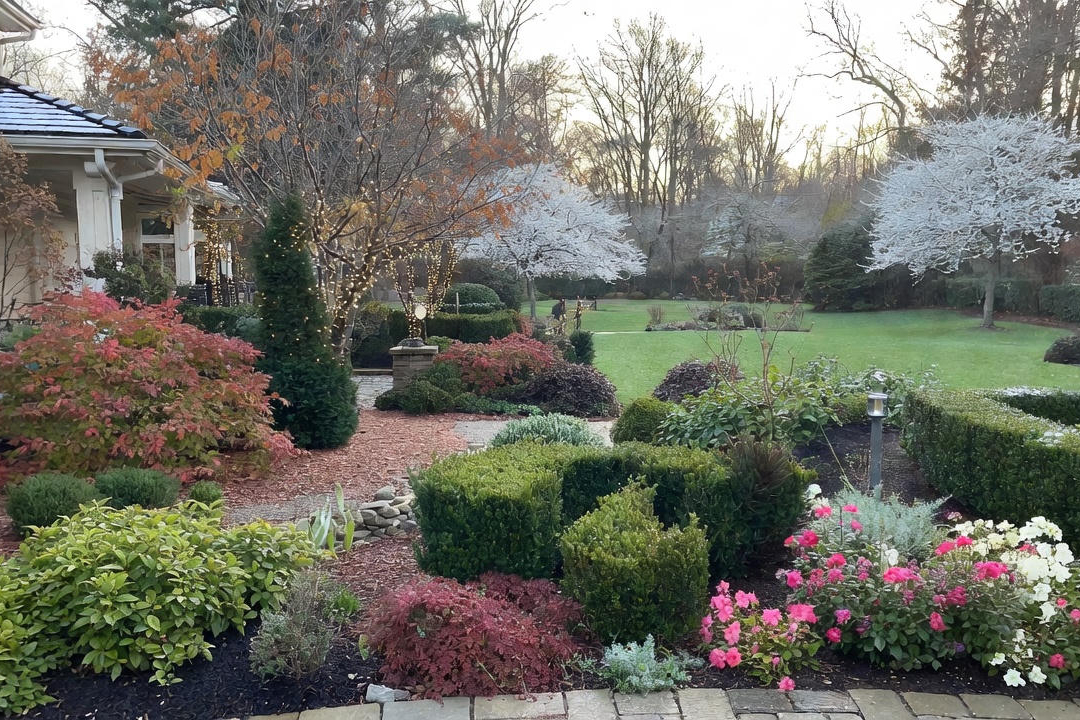
Ornamental grasses are a boon to the landscape. They add interest, color, texture, and assist with erosion control all at the same time. However, many grasses, especially native species, can grow bigger than you’d like for a suburban yard. Muhly grass (Muhlenbergia capillarias), a North American native, is a compact alternative and a knockout in a yard design.
Muhly grass is a long-lived and well-behaved perennial. While it can be propagated from seed, it rarely self-seeds, which eliminates any concern for invasiveness. At a mere 2’-4’ tall and wide at maturity, its short stature makes it the perfect choice for smaller garden designs, or for incorporating several plants into a larger plan.
A late-season gift to the landscape, Muhly grass produces green strappy leaves from the clump base. Come fall, seed panicles of dainty pink flowers float above the plant in an airy mist. Muhly grass is at its most stunning when planted en masse such as along walkways, or planted behind shorter plants in a perennial bed.
Plant Profile
Muhly grass is known by other common names such as Gulf Muhly, Pink Muhly, Purple Muhly, and Cotton Candy Grass. It’s an easy to grow and low-maintenance perennial.
Zones: 7-10
Sun/Shade: Full sun/Light shade
Height: 4’ feet
Width: 3’ feet
Bloom Time: August-October
Bloom Color: Pink, purple, or white
Wildlife: Seeds are consumed by birds and small mammals. Excellent year-round shelter for wildlife.
Cultivation: Not much phases this tough ornamental grass. It tolerates poor soil, heat, drought, humidity, and salt, like a champ. Choose a spot with full sun or lightly dappled shade, as too much shade will reduce the number of blooms. The soil should be well-draining. If the native soil is heavy clay, loamy garden soil should be added as an amendment.
Dig a hole that is twice as wide and deep as the plant’s root ball. You may need to place some of the native soil at the bottom of the hole so that the plant sits just above the soil line once it’s planted (this makes up for the soil settling).
Place the plant into the hole and fill it back in with the native soil along with the new garden soil (if necessary). Thoroughly water the plant and thereafter, only water enough to keep the root ball and soil damp. Once it’s established, Muhly grass is highly drought tolerant, but during the hottest parts of the summer, it will be happiest with more irrigation than usual.

Varieties
- ‘Regal Mist’ cultivar is almost identical to the true species M. capillaris but has been bred to be a bit smaller.
- ‘White Cloud’ (M. capillaris) blooms with white seed heads instead of pink. The way the light is reflected makes them appear to glow.
- ‘Pink Flamingos’ (M. capillaris x M. lindheimeri) is a hybrid that produces taller and upright flowers than the species M. capillaris.
Special Features
Muhly grass is an over-achiever as a showstopper while blooming and remaining interesting and functional through the rest of the year. Its usefulness as a soil stabilizer makes it natural for slopes. The fact that it’s deer-resistant is just icing on the cake.
Download iScape now and create landscape designs that improve curb appeal and transform gardens. iScape it!




ds.jpg)
.jpg)
